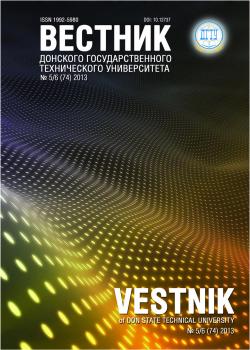The work objective is to define the properties of the mobile road-building machinery (MRBM) traffic flows for the control effectiveness improvement. The results of the system analysis of the MRBM control tasks are presented. Their solution concept is presented; the traffic control problem formalization for the mobile road-building machines under the ever-changing conditions of movement is performed. For the first time, system and structural status assessment criteria for MRBM are formulated; the control concepts of the mobile objects groups are analyzed; recommendations for selecting the type of control are given. Mathematical models of the traffic flows establishing the dependence of the motion speed on the traffic density, and a mathematical model of the traffic route optimization for the mobile road-building machinery are presented. Strategies of the adaptive and intelligent control of the mobile objects groups of different numbers, as well as the results of the regression analysis of the mobility objects motion model are presented
mobile road-building machinery, group control, traffic flows, traffic management, traffic route optimization.
Введение. Вопросы управления подвижными объектами различного вида, безусловно, представляют научный интерес. При этом особенно остро стоит проблема взаимодействия указанных объектов в условиях недетерминированной среды функционирования. Сложившаяся в настоящее время ситуация требует улучшения качества работы транспорт-ных комплексов, повышения средней скорости движения объектов, сокращения времени перемещения транспорта между пунктами назначения. Решению указанных задач способствует использование информационно-управляющих систем.
1. Parshin, D.Y., Tsvetkova, O.L. Upravlenie dvizheniem stroitel´nykh robotov. [Motion control of construction ro-bots.] Mechatronics, Automation, Control, 2007, no. 12, pp. 13-16 (in Russian).
2. Parshin, D.Y., Ogorodniy, D.N., Shitova, R.G. Integratsiya sistem upravleniya stroitel´nykh kholdingov na osnove neyrosetevoy koordinatsii. [Integration of building holdings control systems based on neuronet coordination.] New Technolo-gies, Maykop, 2012, no. 3, pp. 95-101 (in Russian).
3. Tarasik, V.P. Intellektyal’nye sistemiy upravleniya avtotransportniymi sredstvami. [The vehicles intelligent control systems.] Moscow: Technoprint, 2004, 264 p. (in Russian).
4. Timofeyev, A.V., Ekalo Y.V. Sistemiy cifrovogo i adaptivnogo upravleniya robotov. [Systems of digital and adap-tive control of robots.] Saint Petersburg: Izdatel´stvo SPbGU, 1999, 248 p. (in Russian).
5. Meskhi, B.C., Korotkiy, A.A., Maslov, V.B. Kontseptsiya razvitiya seti kanatnogo metro v Rostove-na-Donu. [Vi-sion of cable metro network in Rostov-on-Don.] Vestnik of DSTU, 2011, no. 8(59), iss. 2, pp. 1348-1355 (in Russian).
6. Tugengold, A.K., Dimitrov, V.P., Borisova, L.V., Lukyanov, E.A., Gerasimov, V.A. Itogi i perspektivyi razvitiya issledovaniy v oblasti intellektualnogo upravleniya mehatronnymi tehnologicheskimi sistemami.[Mechatronics technological systems intellectual management prospects and results.] Vestnik of DSTU, 2010, no. 5(48), pp. 648-666 (in Russian).
7. Kerner, B.S. Introduction to Modern Traffic Flow Theory and Control: The Long Road to Three-phase Traffic Theory [Text]. New York: Springer, 2009, 271 p. - ISBN 978-3-642-02605-8.
8. Kesur, K. Advances in Genetic Algorithm Optimization of Traffic Signals [Text]. Journal of Transportation Engi-neering, 2009, vol. 135, no. 4, pp. 160-173.
9. Osorio, C., Bierlaire, M. A surrogate model for traffic optimization of congested networks: an analytic queering network approach [Text]. Report TRANSP-OR, 2009, vol. 90825, pp. 1-23.
10. Traffic control systems handbook [Text]U.S.F.H. Administration, P.-W. and Associates. New York: Springer, 2005, 478 p.





